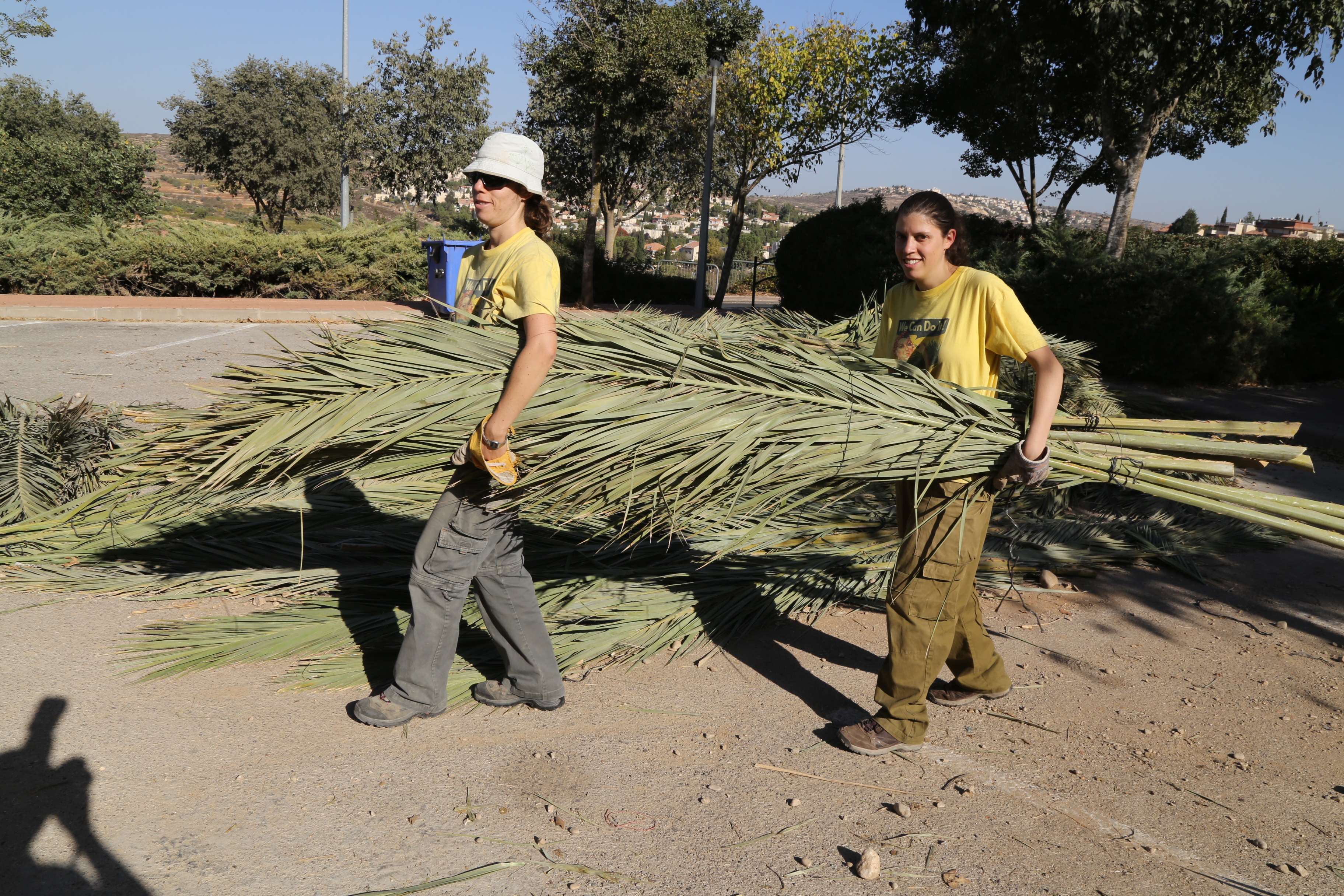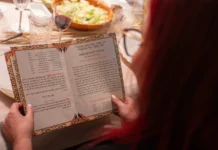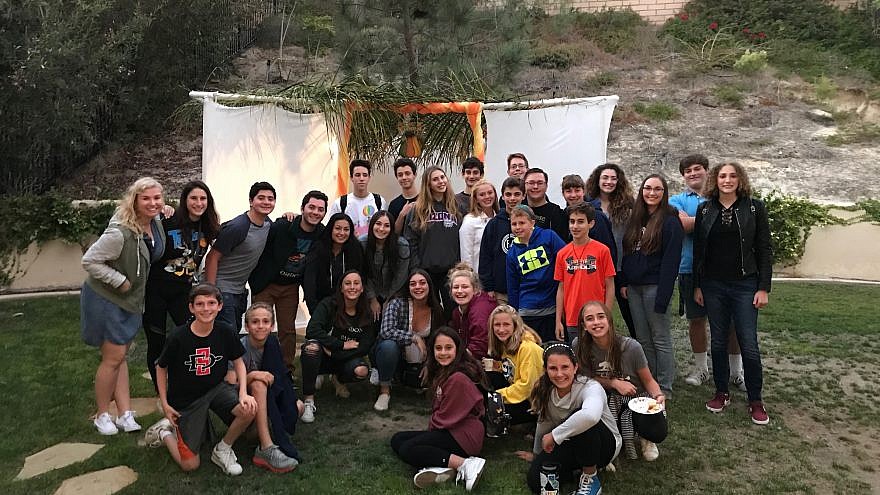For Yael Michaely, her husband Boaz and their three young children, feeling at home in their new country began in earnest one autumn evening in 2004.
For these Israelis recently transplanted to Newton, Mass., the neighborhood sukkah hop transformed anonymous streets into a community and strangers into friends.
Jews of all backgrounds have made this Boston suburban neighborhood feel like one big sukkah, she says. “We come from different congregations—from Orthodox to Conservative to Reform to us secular Israelis, though everyone makes sure all the food is kosher so everyone can join in. I remember saying to my husband that one of my worries moving here was the kids’ Jewish identities. But that night was really reassuring.”

A “sukkah hop” revolves around a route of family sukkahs (and occasionally, synagogue ones, too). Hosts typically sign up far enough in advance to prepare something edible that visitors can enjoy on the run.
Like at many other hops, each family sukkah on the Newton route also has a special activity, like making a holiday-related craft, doing the blessing over the lulav and the etrog, or sampling some traditional fare. Each year, the families end the night around a sukkah-side bonfire singing Jewish songs, “celebrating as a community,” describes Michaely.
Some 55 Hebrew-school students from the Chabad Center in Fairfield, Conn., turn out for an afternoon of Sukkot fun each year. Highlights include a sing-along in one sukkah, craft project in another and some snacks in yet another that invite the kids to practice their blessing-making skills.
“Building and spending time in your own sukkah is one wonderful home-based Jewish tradition,” says Rabbi Shlame Landa, co-director of Chabad of Fairfield with his wife, Miriam. “The kids will remember it always; it literally brings the Sukkot mitzvot home and, if they don’t already have one, they’ll go home afterwards and beg their parents to build one in their yard.”
But sukkah-hopping is not limited to the kids. Many communities organize adult hops, a “progressive dinner” with a different dish in each sukkah—a literal movable feast from soup to nuts. (Grownup hops tend to leave fewer candy wrappers, and more empty bottles, behind.)
For high school senior Shira Griffith, a highlight of a year is the annual sukkah hop sponsored by her United Synagogue Youth (USY) chapter from Congregation Beth Am in San Diego, when dozens of lively teens eat their way through a number of neighborhood sukkahs.
“So many events you’re stuck in a room for hours,” says Griffith. “Here, you are able to change scenery by walking from sukkah to sukkah, and you get to meet your friends’ families. It’s always a lot of fun.”
‘Fall in love with the tradition’
Meanwhile, on the other side of the country, Rochester, N.Y.’s Congregation Beth Shalom, a modern Orthodox synagogue, invites the grownups to enjoy Sukkot at their own more leisurely pace. Their sukkahwalk was born three years ago when Shari Woldenberg moved back to her hometown and told her Beth Shalom Sisterhood friends how fantastic their hop in Chicago had been. Now the walk has become a tradition; its recipe for success being four dishes (soup, salad, cholent and dessert) divided between four sukkahs, with each host giving a five-minute commentary on the holiday.
Though he’s seen a drop in the number of families having sukkahs at their own homes, Rabbi Michael Beals of Congregation Beth Shalom in Wilmington, Del., has high hopes for his communal celebration impacting the future.
When he took the job 14 years ago, the Beals’ family sukkah was an epicenter for two hops: one for the local Jewish day school and the other for his shul. These days the ritual has shrunk to his family’s Havdalah sing-along and dessert open sukkah. “But with so many young adults in their 20s and 30s showing up, I’m hoping they’ll experience how sweet it is to have a sukkah of their own so by the time they have kids, they’ll have fallen in love with the tradition and resolve to build a sukkah for their own families.”

A sukkah reinforces the key role such home-based traditions have in Jewish life, adds the rabbi. “A synagogue one is a nice addition, but each of us is really meant to have one of our own to eat and basically live in,” he says.
The greatest advantage of a sukkah hop, says Massachusetts mom Michaely, is being welcomed into each sukkah in turn, “and seeing how each one looks and feels so different from the last one. Like something exciting is waiting for you at the next stop … and you have no idea what.”
And veteran hop hosts will tell you that, especially when most of the guests are kids, they do have a terrific time, though after they depart for the next sukkah, it appears as though a swarm of locusts has swept through, leaving candy wrappers and puddles of apple juice in their wake.
“That’s why it’s such a relief to be in the sukkah,” says Michaely. “Having the fun—and the mess and noise—outside really is a blessing.”
Tips for a successful ‘sukkah hop’:
- Go crazy with the decor: Bad taste is perfectly good on Sukkot. Decorate creatively, festooning your “home away from home” with all sorts of fruits and veggies, flowers, even a mirrored ball dangling from the sechach, the natural leaf or plant covering on top. Do include a poster (hand-lettered works) with the blessings that kids (and adults) can recite while in the sukkah.
- Be equipped. Make sure your sukkah has a lulav and etrog ready for any guest who wants to do the mitzvah of waving/shaking them. No Judaica shop nearby? You can usually purchase a set through a local synagogue or rabbi.
- Skip the cherry flambé. When it comes to kids and teens, slaving over a hot stove for the latest gourmand delicacy is a waste of time. (Grown-ups will appreciate your efforts much more). Fresh fruit is easy and themed to this harvest festival. Apples and pears can also serve as decorations (before they’re gobbled up).
- Dust off your guitar. Music makes your hop that more memorable, whether it’s a bonfire Jewish sing-along or piping recorded Israeli folk music into your sukkah.
- Make room for the holy guests. You can tell your guests that they are in good company visiting your sukkah. Tradition has it that also dropping during the holiday are the holy ushpizin (guests), one each night in the following order: Abraham, Isaac, Jacob, Joseph, Moses, Aaron and David. Note: Many in today’s generation also include their wives.


























